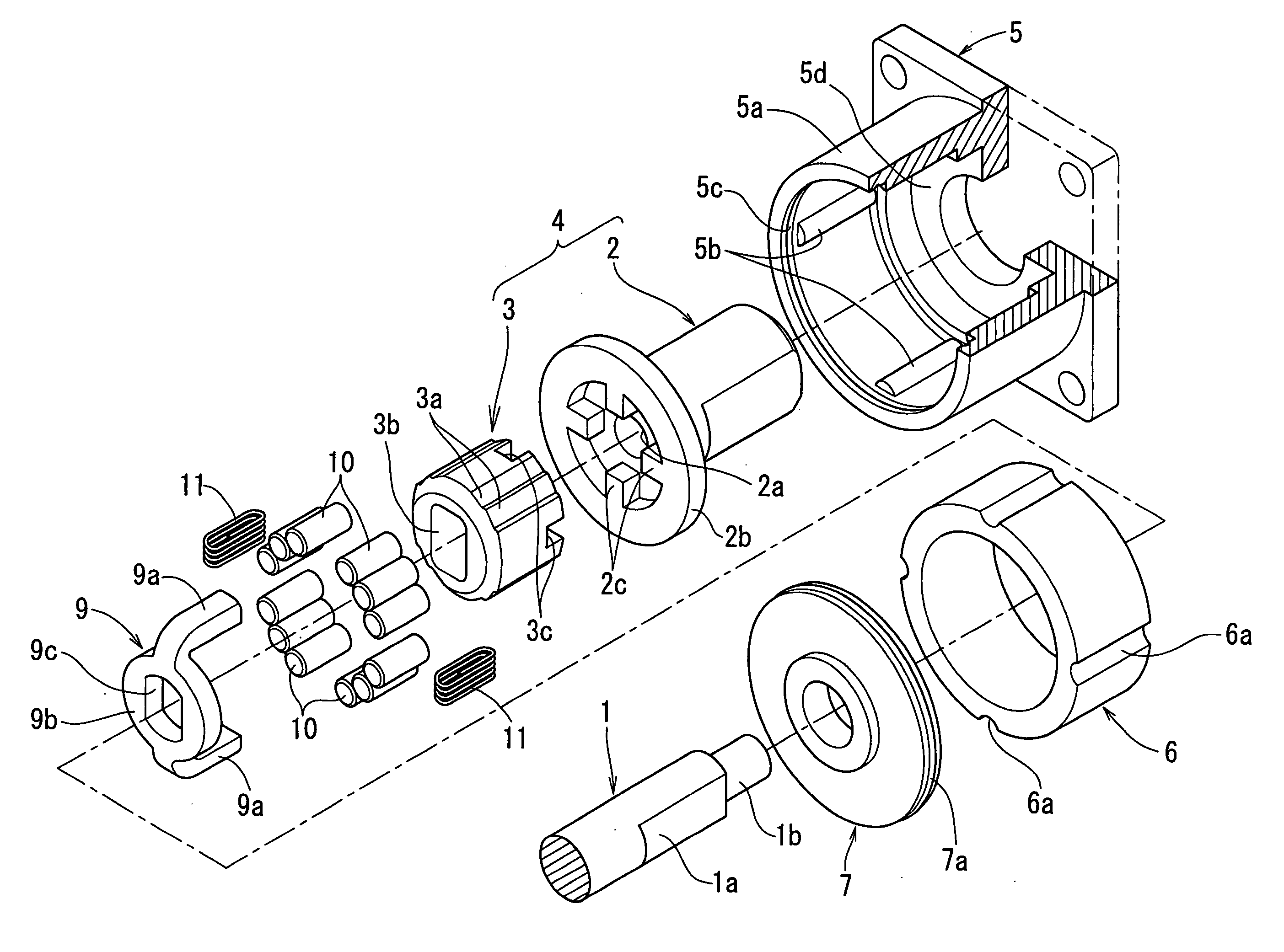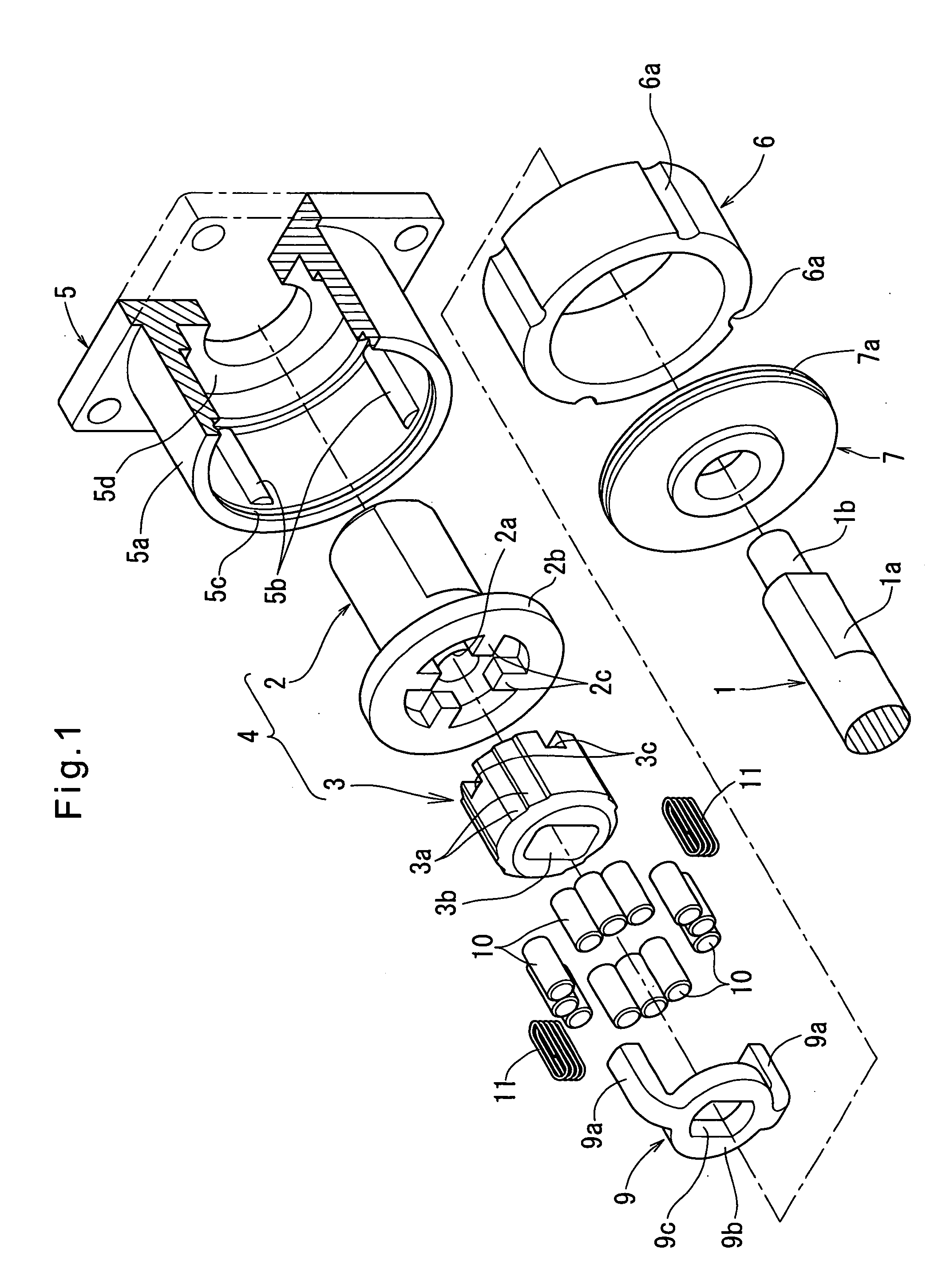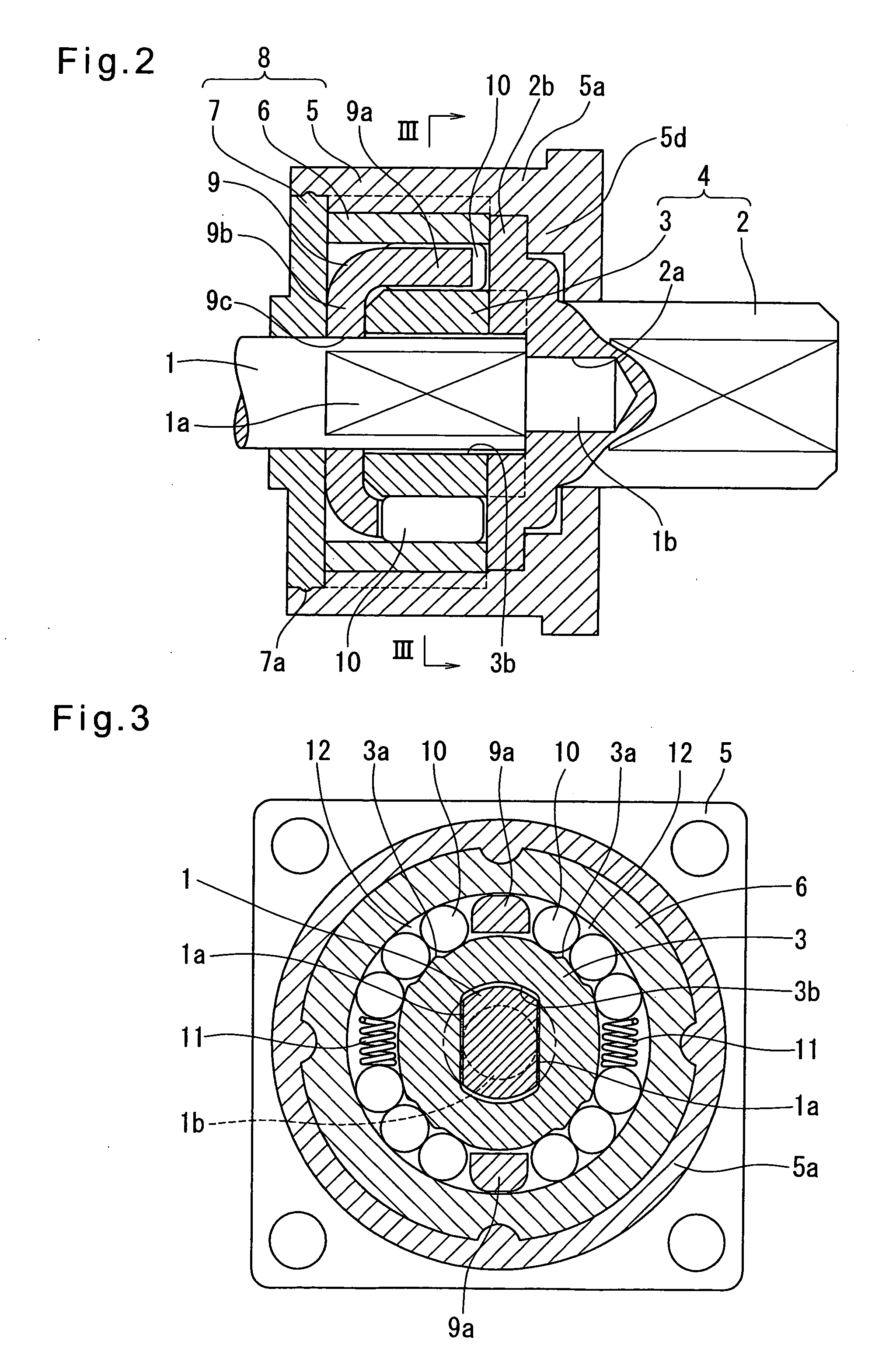Anti-reverse input clutch
a technology of input clutch and input member, which is applied in the direction of interlocking clutches, couplings, braking systems, etc., can solve the problems of increasing the manufacturing cost of the entire clutch, affecting the design freedom of the clutch, so as to reduce the time and cost of manufacturing, and facilitate the formation
- Summary
- Abstract
- Description
- Claims
- Application Information
AI Technical Summary
Benefits of technology
Problems solved by technology
Method used
Image
Examples
Embodiment Construction
[0023] Now referring to FIGS. 1 to 7, the embodiments according to the present invention are described. First, FIGS. 1 to 3 show the first embodiment. As shown in FIGS. 1 and 2, the anti-reverse input clutch of this embodiment includes an input shaft (input member) 1, an output member 4 comprising an output shaft 2 and an inner ring (cam member) 3 defining a plurality of cam surfaces 3a on the outer periphery thereof, a stationary member 8 comprising a housing 5, an outer ring 6 and a presser lid 7, and a retainer 9 having two legs 9a inserted between the inner ring 3 and the outer ring 6. Cylindrical rollers (rolling elements) 10 and springs (elastic members) 11 are disposed between the two legs 9a of the retainer. The output shaft 2 and the inner ring 3, which constitute the output member 4, are preferably made of sintered metal, forged metal or plastic.
[0024] The input shaft 1 has a front end portion formed with two parallel flat surfaces 1a on its outer periphery and extending ...
PUM
 Login to View More
Login to View More Abstract
Description
Claims
Application Information
 Login to View More
Login to View More - R&D
- Intellectual Property
- Life Sciences
- Materials
- Tech Scout
- Unparalleled Data Quality
- Higher Quality Content
- 60% Fewer Hallucinations
Browse by: Latest US Patents, China's latest patents, Technical Efficacy Thesaurus, Application Domain, Technology Topic, Popular Technical Reports.
© 2025 PatSnap. All rights reserved.Legal|Privacy policy|Modern Slavery Act Transparency Statement|Sitemap|About US| Contact US: help@patsnap.com



